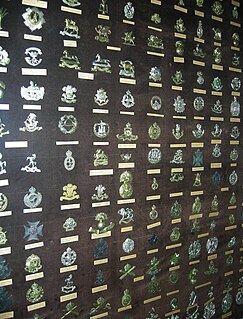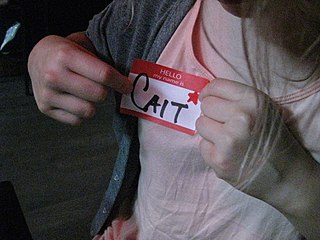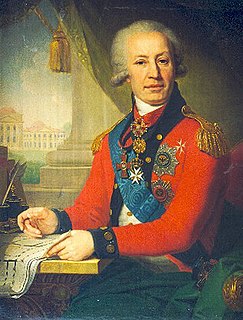 W
WA badge is a device or accessory, often containing the insignia of an organization, which is presented or displayed to indicate some feat of service, a special accomplishment, a symbol of authority granted by taking an oath, a sign of legitimate employment or student status, or as a simple means of identification. They are also used in advertising, publicity, and for branding purposes. Police badges date back to medieval times when knights wore a coat of arms representing their allegiances and loyalty.
 W
WThe ANZAC "A" badge is a brass insignia authorised in November 1917 for members of the First Australian Imperial Force who had served as a member of the Australian and New Zealand Army Corps (ANZACs) during the Gallipoli campaign in 1915. In 1918, eligibility was extended to those who had served at Lemnos, Imbros and Tenedos and the transports and hospitals off Gallipoli as well as the communications line to Egypt.
 W
WThe badge of the Royal Air Force is the heraldic emblem used to represent the RAF which features an eagle superimposed on a circlet which is surmounted by a crown.
 W
WBeggars' badges were badges and other identifying insignia worn by beggars beginning in the early fifteenth century in Great Britain and Ireland. They served two purposes; to identify individual beggars, and to allow beggars to move freely from place to place.
 W
WA cap badge, also known as head badge or hat badge, is a badge worn on uniform headgear and distinguishes the wearer's nationality and/or organisation. The wearing of cap badges is a convention commonly found among military and police forces, as well as uniformed civilian groups such as the Boy Scouts, civil defence organisations, ambulance services, customs services, fire services etc.
 W
WChairman Mao badge is the name given to a type of pin badge displaying an image of Mao Zedong that was ubiquitous in the People's Republic of China during the active phase of the Cultural Revolution, from 1966 to 1971. The term is also used for badges associated with Mao that do not actually have a picture of him on them. It is estimated that several billion Chairman Mao badges were produced during the period of the Cultural Revolution.
 W
WThe Dunstable Swan Jewel is a gold and enamel brooch in the form of a swan made in England or France in about 1400 and now in the British Museum, where it is on display in Room 40. It was excavated in 1965 on the site of Dunstable Friary, and is presumed to have been intended as a livery badge given by an important figure to his supporters; the most likely candidate is probably the future Henry V of England, who was Prince of Wales from 1399.
 W
WThe Dutch Republic Lion was the badge of the Union of Utrecht, the Republic of the Seven United Netherlands and is a precursor of the current coat of arms of the Kingdom the Netherlands.
 W
WThe Irish Defence Forces Cap Badge is common to all services and corps of the Irish Defence Forces. Although principally associated with the Irish Army it is also worn by and appears in elements of the insignia of the Naval Service and Air Corps.
 W
WA jugate consists of two portraits side by side to suggest, to the viewer, the closeness of each to the other. The word comes from the Latin, jugatus, meaning joined.
 W
WKim Il-sung and Kim Jong-il badges are lapel pins with portraits depicting either one or both of the Eternal Leaders of North Korea, Kim Il-sung and Kim Jong-il. The badges have been common since the late 1960s, and are produced by the Mansudae Art Studio. There are more than 20 different designs, some of which are more common than others. Common examples include red flag-shaped pins depicting either President Kim Il-sung or General Secretary Kim Jong-il, smaller circular pins with the same portraits on white backgrounds, and larger flag-shaped pins depicting both leaders.
 W
WA lapel pin, also known as an enamel pin, is a small pin worn on clothing, often on the lapel of a jacket, attached to a bag, or displayed on a piece of fabric. Lapel pins can be ornamental or can indicate the wearer's affiliation with an organization or cause. Before the popularity of wearing lapel pins, boutonnières were worn.
 W
WA name tag is a badge or sticker worn on the outermost clothing as a means of displaying the wearer's name for others to view.
 W
WA nursing pin is a type of badge, usually made of metal such as gold or silver, which is worn by nurses to identify the nursing school from which they graduated. They are traditionally presented to the newly graduated nurses by the faculty at a pinning ceremony as a symbolic welcome into the profession. Most pins have a symbolic meaning, often representing the history of the nursing program for that school of nursing.
 W
WPilgrim badges are decorations worn by some of those who undertake a Christian pilgrimage to a place considered holy by the Church. They became very popular among Catholics in the later medieval period. Typically made of lead alloy, they were sold as souvenirs at sites of Christian pilgrimage and bear imagery relating to the saint venerated there. The production of pilgrim badges flourished in the Middle Ages in Europe, particularly in the 14th and 15th centuries, but declined after the Protestant Reformation of the mid-16th century. Tens of thousands have been found since the mid-19th century, predominantly in rivers. Together they form the largest corpus of medieval art objects to survive to us today.
 W
WPin trading is the practice of buying, selling, and exchanging collectible pins – most often lapel pins associated with a particular common theme, as well as related items – such as lanyards, bags, and hats to store and display the pins – as a hobby. Collectible pins used in pin trading are often found in amusement parks and resorts; the Walt Disney World and Disneyland resorts, for example, are venues where Disney pin trading has become a popular activity, and similar pin trading activities are popular at comparable venues such as SeaWorld, Universal Resorts, and at Six Flags theme parks. They are also found at events that are recurring and/or share a common theme, such as the Olympic Games and other sporting events. The pins collected and traded are often of a limited edition and thus more highly valued in pin trading, and are sometimes marked or distributed by various companies such as The Coca-Cola Company who sponsor the events and venues associated with the traded pins. Pin trading at particular venues and events is often governed by rules of etiquette particular to the venue or occasion.
 W
WA pin-back button or pinback button, pin button, button badge, or simply pin-back or badge, is a button or badge that can be temporarily fastened to the surface of a garment using a safety pin, or a pin formed from wire, a clutch or other mechanism. This fastening mechanism is anchored to the back side of a button-shaped metal disk, either flat or concave, which leaves an area on the front of the button to carry an image or printed message. The word is commonly associated with a campaign button used in the United States and abroad during a political campaign. The first design for a pin-back button in the United States was patented in 1896, and contemporary buttons have many of the same design features.
 W
W"Badges? We don't need no stinkin' badges!" is a widely quoted paraphrase of a line of dialogue from the 1948 film The Treasure of the Sierra Madre. That line was in turn derived from dialogue in the 1927 novel The Treasure of the Sierra Madre, which was the basis for the film.
 W
W W
W W
W W
W W
W W
W W
W W
W W
W W
W W
W W
W W
W